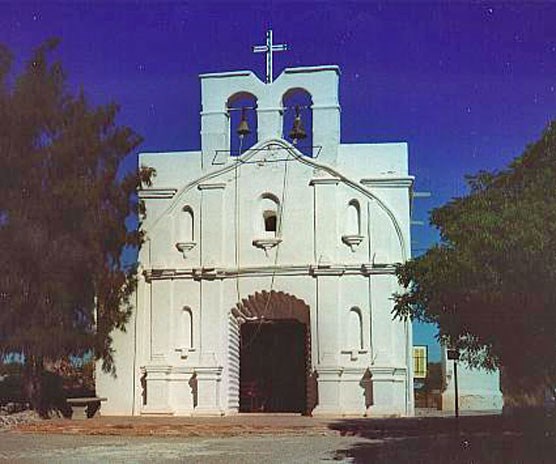
Originally a rancheria with a nearby silver mine at the confluence of two rivers, the Altar and the Magdelena, Oquitoa is considered by many to be the gem of the Kino missions. Father Kino first made mention of San Antonio de “Uquetoa” on January 19, 1689, when the Father Visitor Manuel Gonzales assigned Father Antonio Arias to be its first priest. In 1705 there was a small chapel but no other church was constructed until 1730. It was partially or mostly destroyed, however, during the revolt of 1751. Oquitoa was first a visita of Tubutama in 1709, then of Caborca and of Átil. In 1801, under the guidance of the longest resident priest, Fray Francisco Moyano, it became a cabecera without visitas. It remained so until 1830. Bishop Antonio de los Reyes, who, like various other priests, spelled Oquitoa as Huquitoa, wrote a report on 6 July 1772 on the condition of the missions in the Upper and Lower Pimería. Following is his report on San Antonio del Oquitoa as translated by Father Kieran McCarty:
The Franciscans gave the church a facelift as, mentioned in the diaries dating 1788 and 1797. It was perhaps at this time that it received the Franciscan façade. Interestingly enough it kept its flat roofed Jesuit architecture - the only one among Kino’s missions with such a feature still standing today. Oquitoa’s first priest, Father Antonio Arias, gave his patron saint’s name, San Antonio de Padua, to the mission. Today there are only a few relics of the mission period. A baptismal font made of copper was unlike the typical stone and copper models of its day. Six pictures of the crucifixion were painted by Mexican artists in the early 1800s. Perhaps the four old rifles and three small bronze bells noted in 1935 can still be seen in the sacristy. The choir loft and two side windows were reconstructed in 1920. The doors are made of mesquite, as are the beams supporting the roof. |
Last updated: May 14, 2020
